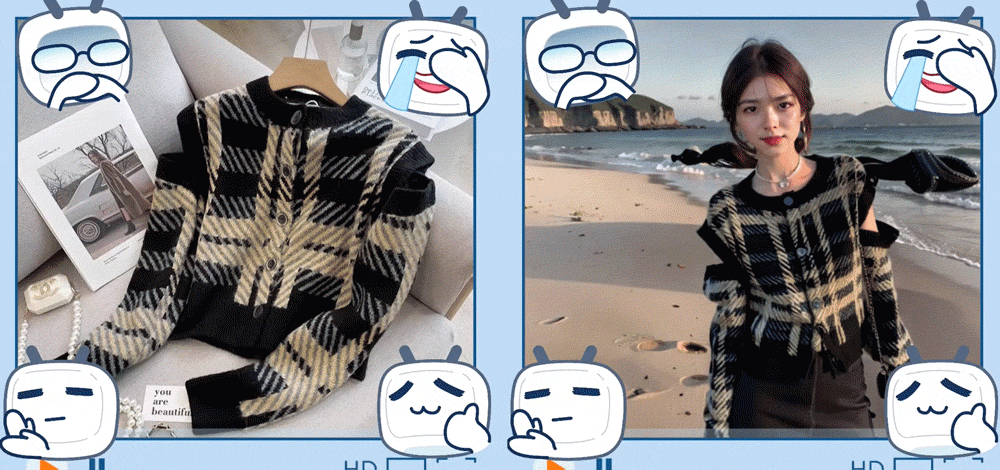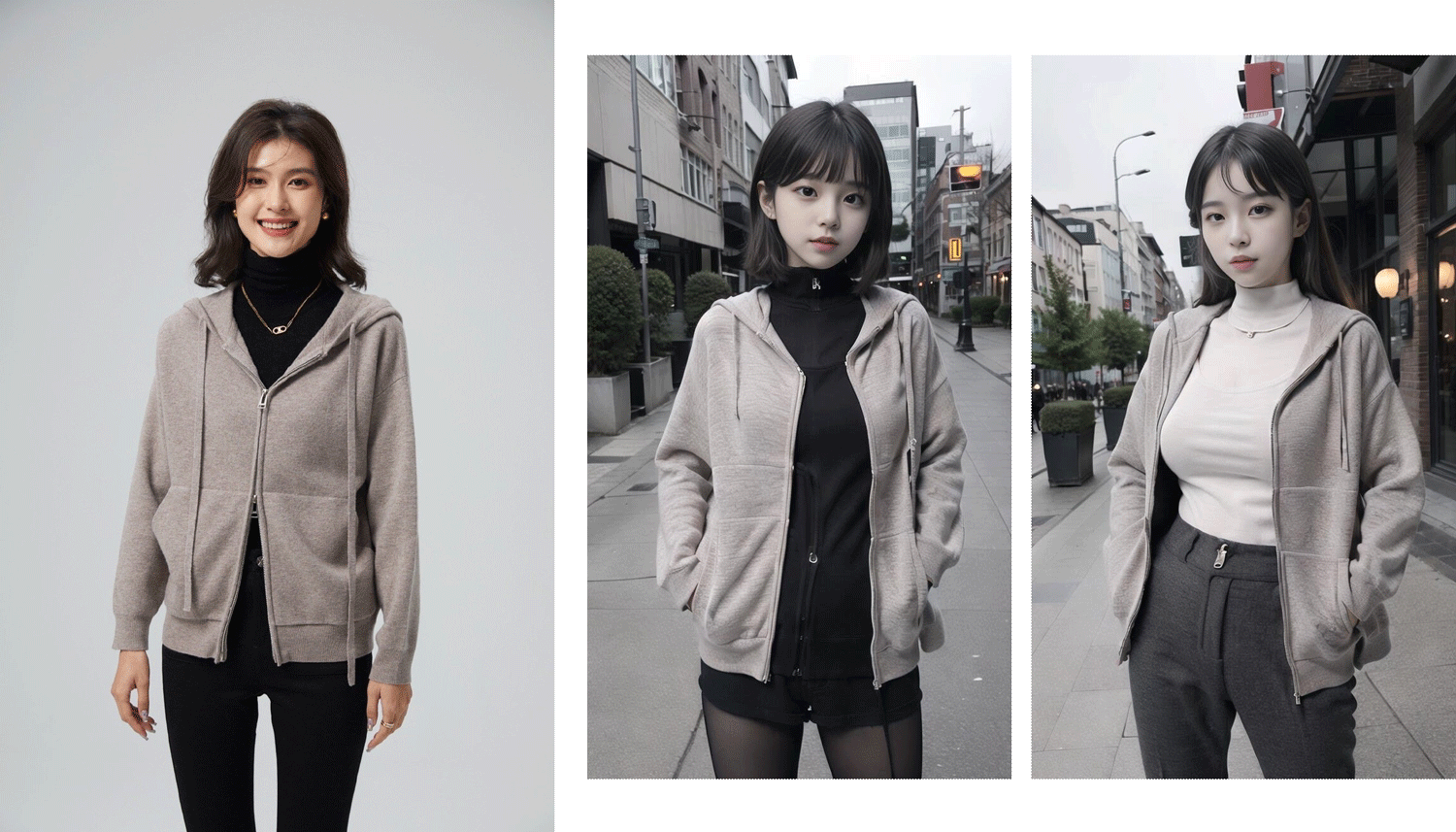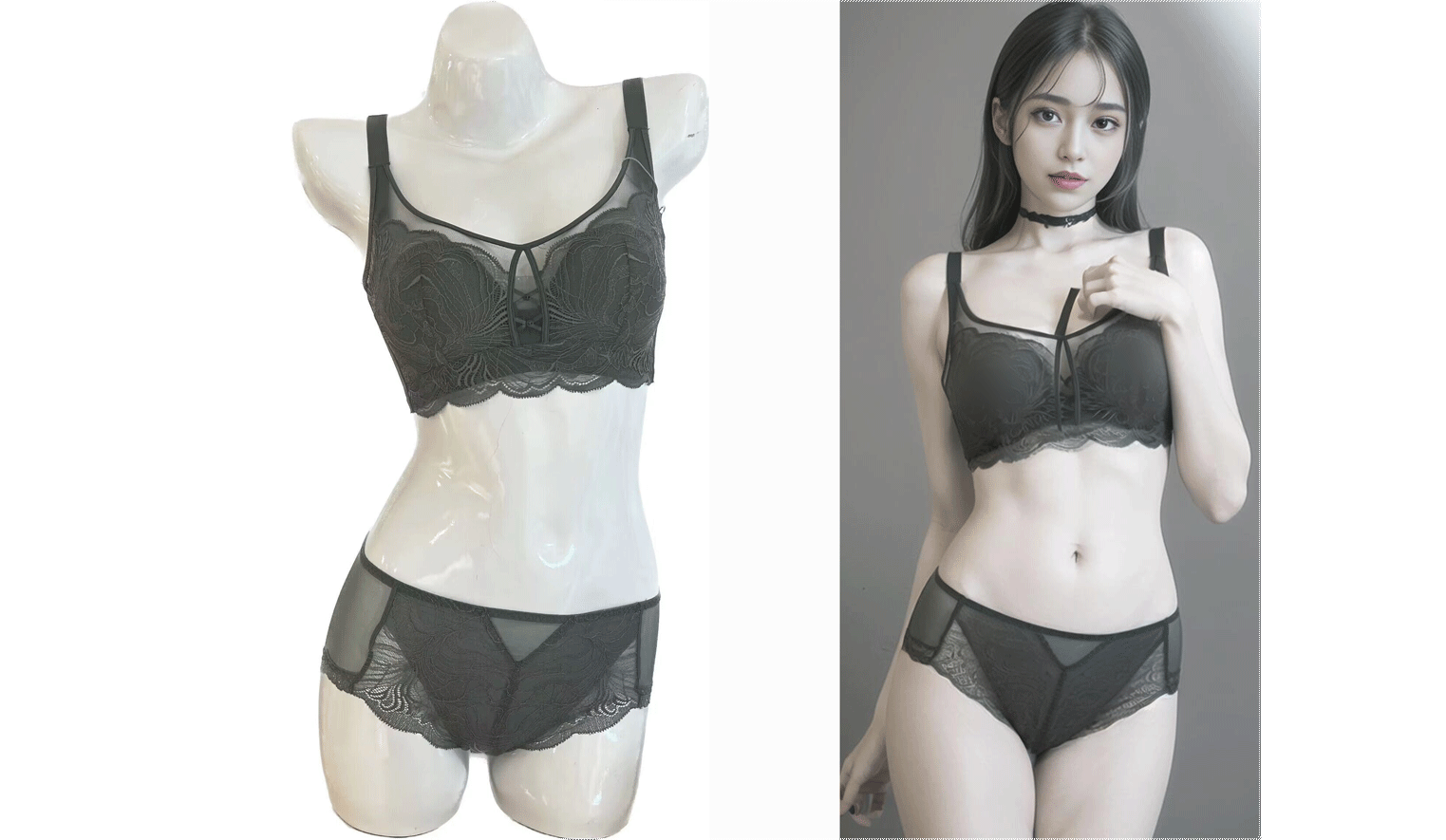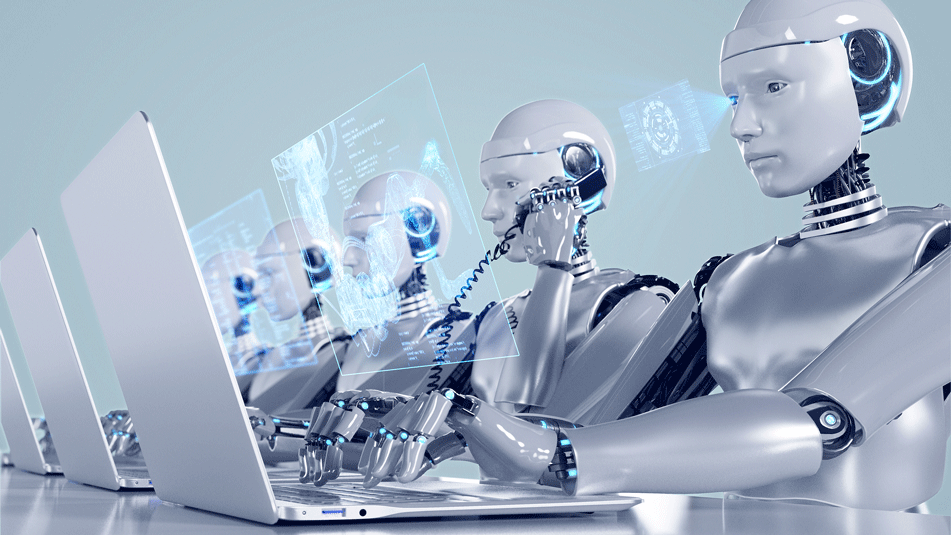
In China, AI-Generated Fashion Models Are Hugely Popular — and Sexist
The model in the picture immediately draws the eye. Slim, busty, and dressed only in a black lace bra and stockings, she smiles seductively as she poses for the camera on a sandy beach. Her fair skin, smooth as porcelain, glows under the sunshine.
She looks too perfect to be real — and she isn’t. Look closely, and her fingers give her away: The nail on her index finger is misplaced, while her thumbnail bends strangely, like a failed retouch job.
Artificial intelligence-generated images like this one have taken China’s fashion industry by storm in recent months. Doe-eyed, big-breasted AI bots are rapidly replacing human models in magazines, store catalogs, and online advertising campaigns. They’re also mesmerizing users on Chinese social media, with the hashtag #AIModel receiving millions of views.
But the trend is already generating controversy. Almost without exception, the AI models conform to a certain — highly sexualized — ideal of female beauty: one that prizes tiny waists, wide hips, and visible cleavage. Many Chinese women say they find the images disturbing — and worry that AI fashion will reinforce toxic, unrealistic beauty standards.
AI models are not unique to China, and the concept isn’t brand-new either. Levi’s recently launched a campaign featuring AI-generated images, while an AI model featured on the cover of Vogue’s Singapore edition in March. But the technology has caught on far quicker here than in most other countries.
The Chinese tech giant Alibaba rolled out a free digital fashion model generator on its e-commerce platforms as early as 2020. The tool — named Taji — allows vendors to select from 100 virtual models of varying ages and ethnicities. Then, they can upload their product photos, and Taji will generate a series of images of the model wearing the clothes in the photos. As of the end of 2022, more than 29,000 vendors had used Taji to produce over 1.6 million AI-generated images, according to an Alibaba report.

The figure is likely far higher today. As elsewhere, the launch of ChatGPT this past November led to a surge in interest in AI content generation in China. Chinese illustrators say they are now regularly receiving inquiries from e-commerce vendors interested in commissioning AI-generated fashion shoots.
In March, illustrator Liu Jun posted a video on the Chinese video platform Bilibili explaining how to create photorealistic fashion images using the AI-powered design software Stable Diffusion. The video went viral, racking up more than 150,000 views overnight.
Over the next few weeks, more than 30 companies reached out to Liu to ask about his AI model service, Liu told Sixth Tone. Another illustrator, surnamed Pan, said that 15 Taobao stores and clothing factories had approached him, while another 600 vendors had joined his AI model chat group on the social app WeChat.

Chinese fashion companies tend to be interested in AI models for the same reason: They’re cheap. A human model is typically paid 1,400-1,600 yuan ($200-$225) per hour in China. Factoring in other expenses like makeup artists, photographers, and studio hire, an eight-hour shoot usually costs vendors around 36,000 yuan.
Taji, by contrast, is free. Even commissioning professional AI illustrators — who can produce far more photorealistic and individually tailored images — is far cheaper. Pan said he charges 50 yuan per image, with a minimum of 30 images per order: a total cost of 1,500 yuan. What’s more, AI models don’t get tired, have no schedule conflicts, and are not affected by the weather.
But these AI models often look eerily similar. Overwhelmingly, they are either white women with blue eyes, blond hair, and long legs; or Asian models with wide eyes, big boobs, and a slender figure. Experts caution that this is a feature of AI-generated content: It tends to amplify the cultural biases that already exist in society.

“The ‘male gaze’ for AI models is definitely a problem,” said Jeff Ding, an assistant professor at the George Washington University whose research focuses on China’s AI industry. “Since existing gender biases permeate procedures, algorithms, and design, artificial intelligence technology can replicate and reproduce gender inequality.”
This isn’t an inevitable process, however. Illustrators can generate any kind of AI model that they choose. All they have to do is to collect a data set of images in the desired style, and use it to train a machine learning model. The model will then generate new images by replicating patterns and characteristics from the data set.
“The algorithm and data set are the most important factors when generating images of AI models,” said Liu. “There are no fixed standards to determine what the models look like — their appearance is usually decided by the audience.”
The issue is that illustrators — and their clients — are mostly choosing to use data sets crammed with photos of sexually objectified women. Illustrators work on the AI art software Stable Diffusion, which generates images based on a selected machine learning model. Many opt to use ChilloutMix, a pre-trained model on the AI database Civitai, supplemented by the keyword “doll-likeness.”
Selecting these options will automatically produce images of conventionally attractive Asian women, usually scantily clad and showing large amounts of cleavage. It’s the same model that companies use to create “AI girlfriends.”
Gender experts are concerned about the social harm “doll-likeness” AI models may cause. China is already seeing a spike in cases of eating disorders among girls and young women, which is being fueled by extreme “beauty challenges” popularized on social media.
Stephanie Yingyi Wang, an assistant professor who teaches gender and sexuality at St. Lawrence University, said that AI models could make the problem worse. “Doll-likeness” images set even more unrealistic beauty standards, which will trigger more body shame and anxiety among young women. She urged women to call out companies using AI models that “exploit women.”
“To prevent the trend from getting worse, it’s important for women to speak up against it on social media,” said Wang.
That is already starting to happen. A recent viral post about AI models on the microblogging platform Weibo sparked amazement among many users, but also backlash. Soon after, Xu Ke, a master’s student at the China Academy of Art, took to the social platform Xiaohongshu to denounce the sexism inherent in many AI models.

“Can creators be aware that images of female models should serve females?” Xu wrote.
The post quickly generated more than 2,000 likes and a flood of comments from women expressing their disgust with companies using stereotypical AI models. “They’d better sell those clothes to men,” one comment read. “I’ll block the stores that use this kind of image,” another user wrote.
Many Chinese women who spoke with Sixth Tone held similar views. “I was immediately disgusted by the images (in the viral Weibo post),” said Zheng Le, a 30-year-old from east China’s Jiangxi province. “Their looks and body shapes are so unrealistic and sexual.”
“From my perspective, it’s not a good advertisement for the lingerie line — the images of the AI models looked like pictures of porn stars,” said Irene Pan, a 25-year-old who lives in the eastern city of Hangzhou.

The question is whether this criticism will convince Chinese fashion companies to overhaul their advertising practices. Until now, the ecosystem in which AI models are commissioned and created has been dominated by men, according to Xu.
“The AI models in that Weibo post were created by a man, and those who endorsed the technology in the comments section were also men,” said Xu. “The discussion of AI models was led by men.”
Xu is optimistic that change will come in time. Women are the target audience for many of the ad campaigns using AI models, and she is confident that most female consumers “are not attracted by AI models at all.”
Lin, a fashion model from east China’s Zhejiang province, said she was confident that AI would never totally replace human models. “AI models are emotionless,” said Lin, who gave only her surname for privacy reasons. “Female customers shop at certain Taobao stores because they’re fans of the models. If they replace human models with AI, e-commerce vendors are going to lose a portion of their customers.”
Rising public awareness of sexism in AI, meanwhile, may lead to fundamental, long-term shifts in China’s advertising industry, Xu said. Companies could be pressured into producing more diverse, and less problematic, types of AI models.
“More women are speaking up against the male gaze problem,” she said. “Maybe in the future, more women will contribute to AI-generated content and train machine learning models from a feminist perspective.”
Editor: Dominic Morgan.
(Header image: Visuals from targetFace/Alibaba and GarryKillian/VectorStock/VCG, reedited by Sixth Tone)














